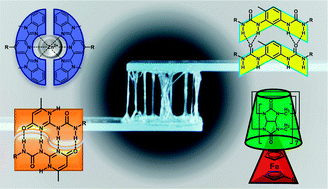Supramolecular polymer adhesives: advanced materials inspired by nature
Abstract
Due to their dynamic, stimuli-responsive nature, non-covalent interactions represent versatile design elements that can be found in nature in many molecular processes or materials, where adaptive behavior or reversible connectivity is required. Examples include molecular recognition processes, which trigger biological responses or cell-adhesion to surfaces, and a broad range of animal secreted adhesives with environment-dependent properties. Such advanced functionalities have inspired researchers to employ similar design approaches for the development of synthetic polymers with stimuli-responsive properties. The utilization of non-covalent interactions for the design of adhesives with advanced functionalities such as stimuli responsiveness, bonding and debonding on demand capability, surface selectivity or recyclability is a rapidly emerging subset of this field, which is summarized in this review.

- This article is part of the themed collection: Bioinspired Surfaces and Materials

 Please wait while we load your content...
Please wait while we load your content...